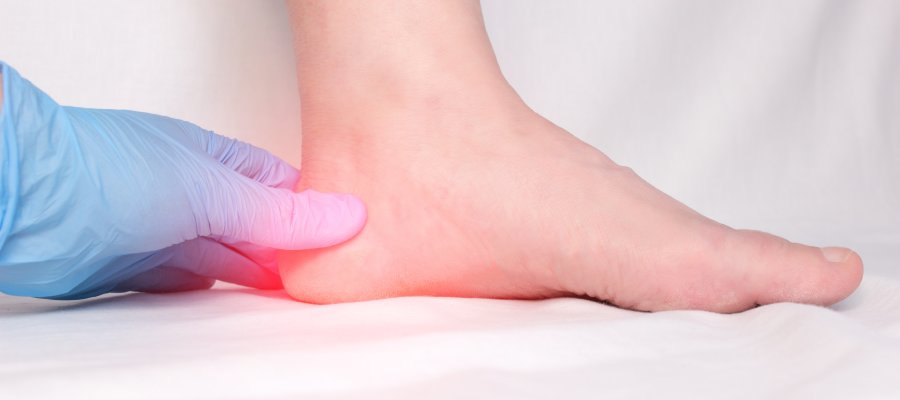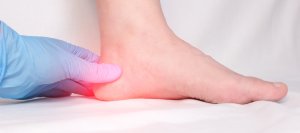What are the Causes of Plantar Fasciitis?
Plantar fasciitis is one of the most common conditions causing heel pain, typically caused by repetitive stress, improper footwear, or tight calf muscles. The inflammation of the plantar fascia can lead to sharp pain, especially with the first steps in the morning. Dr. Charles Baik, DPM, at Renew Podiatry offers effective heel pain treatments near you in Orange, CA. Live a pain-free life! Get a consultation today. For more information, contact us or schedule an appointment online. We are conveniently located at 705 West La Veta Ave, Suite 109, Orange, CA 92868.


Table of Contents:
First line
Second line
Third line
Plantar fasciitis is one of the most common conditions seen in our office and is the most common reason for heel pain. There are other causes of heel pain (stress fracture, nerve entrapment, tendonitis, arthritis, cyst) so it is important that a proper diagnosis be made from the onset.
The plantar fascia is a band of tissue that runs from the heel, spans the entire bottom of the foot, and inserts onto the forefoot. The function of the plantar fascia is to support the arch of the foot. As one walks, the plantar fascia contracts and stretches. But with certain predisposing factors such as flat feet, high arched feet, weight gain, prolonged walking, poor fitting shoes, and minor trauma, the plantar fascia may undergo extreme stress and twisting, resulting in inflammation. Plantar fasciitis is this inflammation of the plantar fascia tissue which occurs mostly at the insertion point on the heel or anywhere along the tissue.
The symptoms of plantar fasciitis usually consist of pain in the bottom of the heel, pain with prolonged walking/activity, and pain with the “first step” in the morning or after prolonged sitting that gets relieved with some walking. The reason behind the “first step” pain is that with inactivity, the plantar fascia contracts and overly tightens which then causes a severe stretch or tearing with the first steps. As one walks it off, blood flow improves to the area and the plantar fascia undergoes a therapeutic stretch.
The diagnosis is usually made with history and physical examination. We may take X-rays or an ultrasound to rule out stress fractures and nerve entrapments, which may mimic plantar fasciitis. Sometimes heel spurs may be seen on diagnostic images, but rarely is it a source of pain, contrary to most people’s beliefs.
Treatment
• Icing (with a frozen water bottle – 20 min on/ 20 min off)
• Stretching (see back of page for stretches)
• Laser (Acute: 6 treatments, Chronic: 10 – 12 treatments)
• Orthotics (Prefabricated (Quadrasteps), Custom Orthotics)
• Shoegear modification (stiff-soled shoes to prevent over flexion of plantar fascia)
• NSAIDs (anti-inflammatories: OTC and Rx; e.g. Motrin, Aleve)
• Decreasing/ Modifying Activity (avoiding jumping, jogging, or prolonged walking/ standing)
• Amnion Injections (Umbilical Cord and Amniotic Membrane to promote healing)
• KT Taping
• Cortisone Injections (reduces inflammation and pain)
• Night splint/ Equinus brace (stretches the plantar fascia)
• Physical Therapy
• CAMwalker (immobilization)
• Surgery
For more information, contact us or schedule an appointment online. We are conveniently located at 705 West La Veta Ave, Suite 109, Orange, CA 92868. We serve patients from Orange CA, Santa Ana CA, Tustin CA, Irvine CA, Anaheim CA, Westminster CA, Yorba Linda CA and surrounding areas.

Additional Services You May Need
▸ Heel Pain Treatment
▸ Laser Fungal Nail Treatment
▸ Ingrown Toenail Treatment
▸ Ankle Sprain Treatment
▸ Foot and Ankle Medicine & Surgery
▸ Orthotics Custom
▸ EPAT/Shockwave Therapy
▸ Hammertoe
▸ Arthritis Treatment
▸ Diabetic Foot Care
▸ Flat Feet Treatment
▸ Foot Warts Treatment
▸ ClarixFlo
▸ Remy Laser




